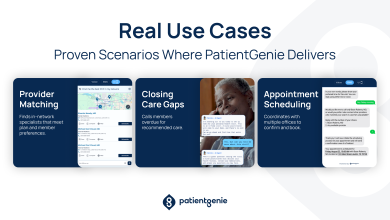
Artificial Intelligence (AI) has evolved from a futuristic concept into a strategic business tool. Organisations now harness AI integration services to improve processes, boost productivity, and create new revenue streams. But amidst the AI hype, one critical question persists—what is the return on investment (ROI) of AI integration services?
Determining AI’s real business impact requires a blend of qualitative and quantitative metrics. Companies must look beyond initial costs and assess AI’s value in enhancing customer experience, operational efficiency, and market agility.
According to Pwc’s AI Business Value Report 2024, AI integration can increase profitability by up to 38% by 2030, with an estimated contribution of $15.7 trillion to the global economy. These projections highlight why measuring ROI is crucial for business leaders to make informed technology investment decisions.
Key Components That Influence AI ROI
The ROI of AI integration services goes beyond simple financial gains. It includes both tangible and intangible benefits, such as:
| Benefit Area | Tangible ROI Metrics | Intangible Benefits |
| Operational Efficiency | Cost savings, time reduction | Improved accuracy, error reduction |
| Customer Experience | Increased retention, conversion rates | Personalization, faster response times |
| Revenue Growth | New revenue streams, upselling | Enhanced product or service innovation |
| Employee Productivity | Reduced manual tasks, faster workflows | Empowerment through decision support systems |
While these benefits are evident, measuring them requires a strategic approach. Companies often underestimate the hidden value AI integration brings by enabling better decision-making, faster market responsiveness, and personalised user experiences.
A cloud app development company – Techstack, emphasises that the most successful AI projects are not driven by hype but by solving real business pain points. According to their experience, success in AI integration depends on a problem-first approach, strong data infrastructure, and active involvement of both technical and business teams throughout the AI lifecycle.
How to Measure the ROI of AI Integration Services
Accurately calculating AI ROI involves a step-by-step framework that includes cost analysis, benefit realisation, and impact measurement.
1. Define Objectives and KPIs
Before integration, organisations must establish clear goals and measurable KPIS. These can include:
- Reduction in operational costs.
- Increase in sales or customer retention.
- Improvement in customer service response time.
- Decrease in manual process errors.
2. Calculate Total Cost of Ownership (TCO)
TCO should include:
- Software and licensing costs.
- Infrastructure investments (cloud, hardware, APIS).
- Integration services and consulting fees.
- Employee training and change management.
- Ongoing maintenance and optimisation costs.
- Employee training and change management.
- Ongoing maintenance and optimization costs.
3. Measure Direct and Indirect Benefits
Direct benefits, such as reduced hours spent on repetitive tasks, can be quantified easily. Indirect benefits, like improved customer satisfaction or innovation enablement, are often measured via customer surveys, Net Promoter Scores (NPS), or employee feedback.
4. Use AI-Powered Analytics for Impact Tracking
AI integration itself can aid in ROI measurement. AI-driven analytics tools allow businesses to monitor performance metrics in real time, helping to adjust strategies and maximise returns.
For example, McKinsey’s Global AI Survey 2024 found that companies leveraging AI analytics tools reported a 33% higher ROI on AI investments than those using traditional measurement tools.
Case Studies: AI Integration Success and ROI
Case Study 1: AI in Retail – Dynamic Pricing Success
An international retail chain integrated AI-driven dynamic pricing tools into its legacy ERP systems. The project focused on optimising product pricing based on competitor analysis, market trends, and customer demand patterns.
- Result: The retailer reported a 17% increase in profit margins and a 9% reduction in inventory costs within 12 months according to Deloitte, AI Retail Transformation Report 2024.
The company worked with a dedicated integration service partner, ensuring the AI pricing tool synchronised seamlessly with existing sales, CRM, and supply chain platforms.
Case Study 2: AI in Banking – Credit Risk Management
A leading bank deployed AI-powered credit-scoring models alongside its traditional systems. The AI integration service ensured real-time data access from multiple channels, including mobile apps, CRM, and social media.
- Result: Loan approval time decreased by 28%, bad loan ratios reduced by 15%, and customer onboarding costs dropped by 12% according to Accenture, AI in Financial Services 2024.
This success was attributed to robust integration strategies that enabled dynamic data flow and compliance monitoring.
Between these case studies, it becomes clear that https://tech-stack.com/ and similar technology providers are pivotal in bridging legacy systems and AI models. Leveraging scalable integration services ensures businesses maximise AI investments while reducing operational risks.
AI Integration Services as a Catalyst for Business Impact
AI integration services enable technical deployment and are strategic partners in maximising AI ROI. Their contributions include:
- Seamless System Interoperability: Ensuring AI solutions communicate with legacy ERP, CRM, or supply chain systems.
- Cloud Optimisation: Assisting in cloud migration and optimisation to support AI workloads efficiently.
- Data Orchestration: Managing data pipelines that feed AI models with clean, relevant, and real-time data.
- Governance and Compliance: Embedding data privacy, ethics, and compliance standards into AI workflows.
- Performance Monitoring: Setting up dashboards and KPIS to track AI impact and identify areas for improvement.
Gartner’s AI ROI Trends 2024 study revealed that organisations working with integration partners achieved 42% faster time-to-value and saw up to 30% higher operational efficiency gains from AI projects than those managing integration internally.
AI integration services have become a critical component for businesses aiming to realise the full potential of their AI initiatives. By connecting advanced AI tools with existing systems, these services enable organisations to improve operational efficiency, elevate customer experiences, and create innovative revenue opportunities.
Measuring AI’s ROI requires a structured, multidimensional approach that accounts for both tangible financial outcomes and intangible benefits like customer satisfaction and innovation capacity. Clear KPIS, diligent cost tracking, and continuous performance analysis ensure AI projects deliver meaningful value.
Companies that view AI integration as a technical task and a strategic business enabler are positioned to lead in today’s rapidly evolving digital economy. Success depends on seamless system interoperability, optimised data flow, and governance practices that support sustainable growth.





